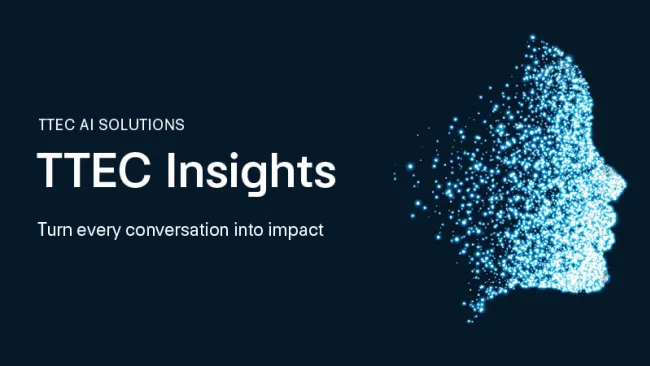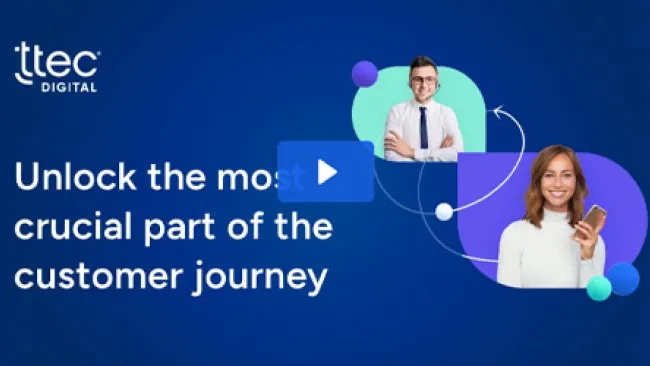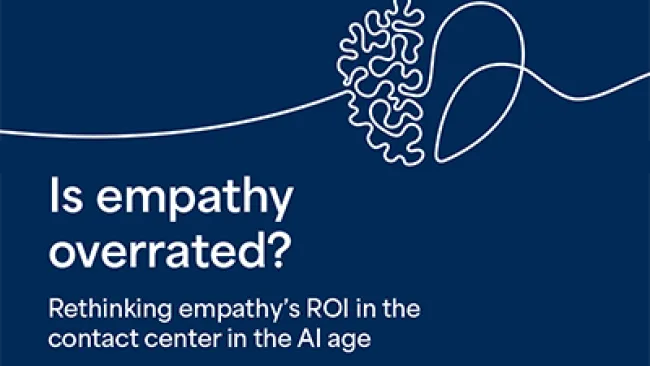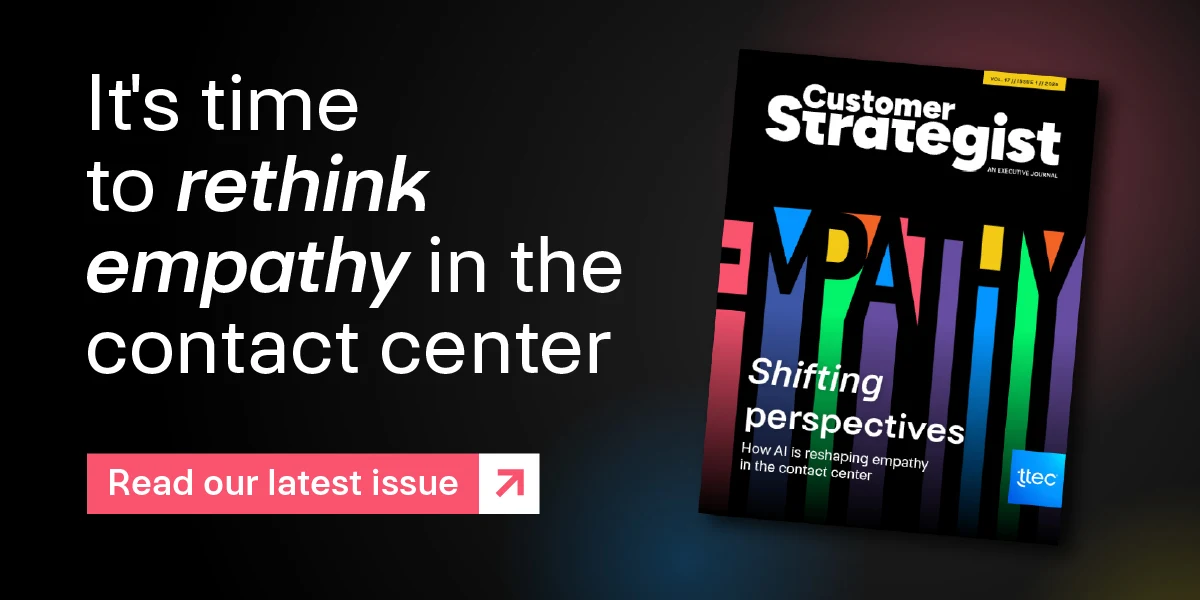It’s a common experience in inefficient omnichannel call centers – you have to tell a customer service rep your information moments after you already inputted it into the IVR system. Or you must explain to a call center agent about the unsuccessful live chat experience that prompted your customer support call. Or you respond to a direct mail or social media promotion, only to find a clueless representative on the other end of the line.
What these all too frequent use cases show is that many companies’ omnichannel approach is really nothing more than multiple, disconnected channels. Unfortunately, if you do not have effective contact center technology in place to see the full customer journey across all channels, then you are not able to provide high quality omnichannel experiences for your customers and agents.
Even for companies with already established omnichannel contact center technology in place, they rarely connect customer data across the full customer journey in real time, which allows channel and use case blind spots to occur over time. In other words, without consistent and ongoing omnichannel optimization, customer service breakdowns are commonplace and it can be extremely frustrating for customers to have to repeat the nature of a support problem with a contact center associate.
In this article, we'll explore the importance of data mapping within and across channels to transform a traditional multi channel call center into a fully optimized omnichannel contact center. With better understanding of the full customer journey, you can provide more seamless experiences across all touchpoints, which improves customer experiences and operational KPIs.
Want Actionable 360-Degree Customer Views? Start with these omnichannel contact center best practices

With the massive volumes of data out there, organizations have an opportunity (and challenge) to create a 360-degree view of the customer that produces actionable insights and decisions. If this seems like a daunting task—it is—but If this seems like a daunting task — it is — but our contact center omnichannel technology teams have developed some best practices and strategic first steps to help you make your omnichannel orchestration sing.
Don't mistake the part for the whole
For many businesses, data is both the key to important insights and an obstacle to getting answers. While there isn’t an easy way to connect disparate data across channels, contact center omnichannel technology is the key to helping connect the dots, so that the entire customer journey comes into view, not just individual channels or touchpoints.
Sometimes less is more
How do you decide which data is important to map across channels? Instead of setting a broad goal for better insights, remember that in some instances, less is more. To figure out which types of insights to pursue first use a prioritization framework to evaluate your needs. Questions to consider include: What types of insights does your team hope to gain? Which ones are likely to deliver immediate versus future results? What data/channels/sources are available and what holes need to be filled? Answering these questions early on will make it easier to stay focused on the plan.
Make sure employees are ready to act on the insights
Insights gained through analytics are only useful if they’re deployed and implemented. Likewise, ensuring data flows between channels is only beneficial if it improves omnichannel customer experiences by allowing the contact center associate to better understand the customers preferences, needs, and case history. In other words, data for the sake of data can be overwhelming, but data for the sake of improved customer and agent experiences is the true key to omnichannel excellence.
Supercharge your contact center omnichannel technology
With some general data optimization best practices established, let us now go into detail about three specific ways to make your omnichannel contact center data strategy even more effective.
- Use channel scorecards to track and compare KPIs to gain a more holistic view of each channels strengths and weaknesses in order to inspire ideas for further optimization and evaluation.
- Based on those findings, choose an area of support and run a small pilot to determine what common communication channels feed into this area, as well as what customer friction points tend to occur. This can fuel more optimization ideas for better flow of customer data, channel routing rules, and gaps in employee knowledgebases.
- This should provide a detailed roadmap of pain points, optimization opportunities, and next steps. Also, one of the most power types of omnichannel contact center data will begin to take shape: predictive analytics. With a clear view of customer and channel data, trends within and across interaction channels will appear, and you can address problems before they occur.
Utilize channel scorecards and data mapping to better understand channel effectiveness
There are numerous ways for a company to map its channels, and one way is to create a scorecard. For example, start with a list of your top 10 channels, based on volume, types of questions asked, and average handle time.
The scorecard can also inspire ideas for further assisting your customers. Are phone calls or web chat more popular at certain times of day, or regarding certain types of customer questions? Do you have live agents who can quickly respond to a customer’s question our concern on your website or on social media?
In the race to engage customers, it is easy to get locked into focusing on just a few channels, but an attribution system can help companies obtain a more holistic view. A system for tracking and comparing the KPIs for each channel should be part of not just an omnichannel strategy, but an overall CX strategy as well.
By using customer data generated across various touchpoints, historically and in real time, contact center associates can create more personalized experiences and deliver prompt and relevant support. Voice, mobile, web, social, chat, email and other channel activity can be combined with transactional, sentiment, demographic, and other data to arm contact center associates with appropriate information. In addition, CRM data can add insight about which products a customer currently has, how valuable a particular customer is, the stage of the lifecycle a customer is in, etc. This data allows organizational leaders and customer-facing employees to deliver interactions that customers expect. It’s a necessary evolution for the contact center of the future to transform from a cost center to a superior customer experience creator. And it has real impact on the success of the business.
Run pilots to find specific friction points within your omnichannel contact center solutions
What does it take to get to this advanced state of omnichannel evolution? A good starting point is to pick a particular area of support and run a pilot to determine what common communication channels feed into this area. It is also important to determine how processes, data integration, and support can be improved to generate better customer experiences overall.
Let’s use a hypothetical example from a consumer bank. Analysis of customer sentiment and feedback from a retail bank reveals a high share of customers are dissatisfied with support between the hours of 5 p.m. and 9 p.m. on weeknights. A deeper dive shows that a large percentage of these customers use SMS text messaging to try to obtain information about their balance during these hours. However, associates working in the SMS channel don’t have access to account information and are unable to help them. Organizational leaders can act on these insights and take steps to ensure that associates are provided access to customer account information on a 24/7 basis. Taking these actions to improve the customer experience will also likely reduce call volumes to the contact center.
Contact center associates can also interact with customers and recognize the customer’s interaction journey as they move between channels (e.g., “I see that you were attempting find additional information about your account on our website. How may I assist you?”). Simple acknowledgement like this will go a long way in showing customers that you value their time and understand their issues.
Unleash the power of predictive analytics for omnichannel contact center optimization
Maximizing the use and understanding of data is critical for contact center performance and service quality improvements to occur. There are numerous ways that organizations can use customer data to gain deeper insights into customer behaviors and customer sentiment to drive improved outcomes.
CX analytics help determine the reasons why people use the channel of their choice. Executives can act on these insights to craft the best intra- and inter-channel experiences. Customer data and predictive analytics can also enable customer experience leaders to identify the aspects of a product that customers need support for. Our research finds that 20 percent of all calls made by customers occur in the first month after purchasing a product or service. Associates should be provided with insights on the type of support these customers are likely to reach out for. Armed with these insights, associates can be prepared to address customer inquiries immediately. Having this knowledge can help contact centers reduce the number of repeat calls on a particular issue while improving NPS.
When associates can deliver these types of experiences it demonstrates to the customer that the company knows who they are and is able to provide them with intelligent support to address his needs and preferences. And this level of advanced knowledge and relevant support can help to strengthen trust and loyalty and increase customer lifetime value.
More about our omnichannel contact center services
We hope you enjoyed this article about omnichannel contact center optimization. Here is additional content from our digital consulting and technology services experts on optimizing your digital transformation and omnichannel approach.
Omnichannel Contact Center Digital Transformation Best Practice: A key aspect of successful CX and digital transformation is contact center transformation in which digital technologies for customer insights, call deflection, personalization, artificial intelligence, and automation are optimized to turn your old fashioned call center into an omnichannel contact center of the future.
Channel Orchestration: Make Your CX Efforts Sing: Providing multiple support across customers' preferred channels is one thing - it’s another to operate those multiple channels with a coherent, optimized approach. A successful omnichannel call center and contact center solution requires true channel orchestration that aligns the best channels to the right interactions. In this Strategy Guide, our team outlines 4 keys to successfully integrating traditional and digital channels to create a successful omnichannel contact center solution.
Cloud Contact Center Solutions to Accelerate Digital Transformation: A cloud based contact center platform provide many benefits, such as increased flexibility, cost savings, and the ability to support customers from virtually anywhere. As companies move from on-premise to cloud contact center software, there are new opportunities to identify CX innovation and leverage cloud contact center best practices to enable value-based transformation. In this trends report, we explore four ways brands are taking advantage of cloud contact centers to spur business growth.
Omnichannel Data is the key to CX Success: When thinking about omnichannel contact center solutions, an important aspect of customer experience success is an effective omnichannel data strategy. In this article, learn how to optimize omnichannel contact center data to better understand what customers value and how to uncover actionable insights for channel optimization.
Contact Center vs. Call Center: 6 Key Differences and Why it Matters: Does your business need a call center solution or an contact center solution? Although these terms are often used interchangeably, there are key differences between these common business communication models. Just as multi channel is not the same as omni channel, call centers are not the same as contact centers. Understanding those differences and how they apply to your business needs is a critical first step to building an efficient, differentiated customer experience that drives loyalty and customer satisfaction.
















